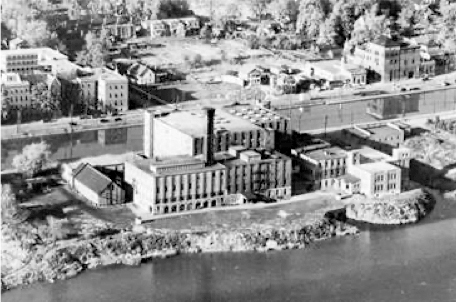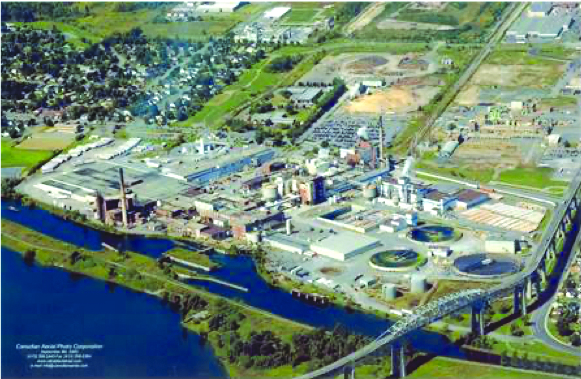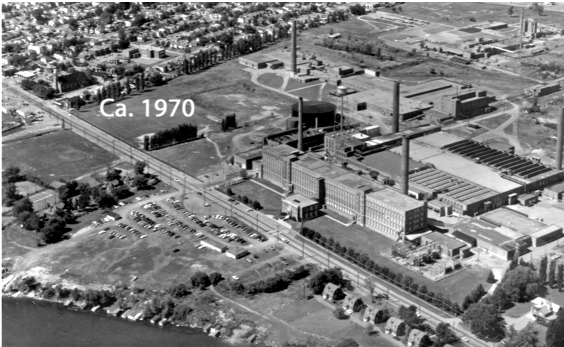For several decades, Cornwall was known as the factory town. The textile industry and the pulp and paper industry were head and shoulders above the other factories in terms of longevity as well as number of people employed. The four cotton mills collectively, the pulp and paper mill and the Courtaulds group of companies, each in turn, was Cornwall’s largest employer.
Between 1868 and 1959, four independently-owned Cornwall cotton mills would merge under the banner of Canadian Cottons Limited. The largest cotton mill, the Canada Mill stood near the foot of Edward Street, east of the Dundas mill. Located at the foot of York Street, the Stormont mill was the second largest. In the former Powdrell & Alexander curtain factory at the n.w. corner of Fourth and Cumberland operated what was known initially as Glengarry Textiles and later as the Dundas Annex.

Between them the four cotton mills manufactured wool and/or cotton bed blankets, picnic blankets, material for draperies, as well as flannel for pajamas and diapers.
Cornwall’s historic pulp and fine paper mill occupied land in and around the former Cornwall Township community of Smithville, bearing an address of 1 Hazel Avenue and, after the demise of Smithville and Hazel Street, renumbered as 800 Second Street West. The mill launched under the banner of Toronto Paper Mfg Co. Ltd in 1881. 1919 witnessed new ownership and a rebranding as Howard Smith Paper Mills. Between 1961 and the 2006 closing, the mill operated as one of a series of divisions and business units of Domtar Inc.

Over time, the mill shifted from offering a wide variety of fine papers in many colours, weights and embossed finishes to Bright White Bond & Copy paper for customers such as Xerox, Register stock as well as Coated Card and Coated Cover grades. At one time, it even produced paper that was used to print Canadian paper currency.
The sprawling Courtaulds property at 1150 Montreal Road had previously been part of the 240 acre Branard Butler farm and apple orchard, which ran three miles deep. The company broke ground in 1924, opened the following year and closed shop in 1993.

Among their manufactured goods were found viscose filament & rayon yarn, Tyrex, Fibro, the Coloray and Caravelle line of carpets as well as food wrap. J-Cloth was made from rayon fabric manufactured in Cornwall. Bounce fabric softener was made using Cornwall Fibre. Tenasco Cord went into the production of tire yarn. “Synthetic silk” was used to manufacture parachutes. The company even went into fibre glass production under a partnership with Larson Boats.
The Cornwall Community Museum is poised to launch an enhanced Big Three Exhibit this month on the main and top floors of the Wood House. The Museum is centrally located at the foot of York Street in Lamoureux Park. Visitation is 9-4 on Tuesdays, Wednesdays and Saturdays as well as on Thursdays and Fridays Noon-7.
Photos are from the Museum’s collection.
Don Smith, Curator / Manager
Cornwall Community Museum / SD&G Historical Society



